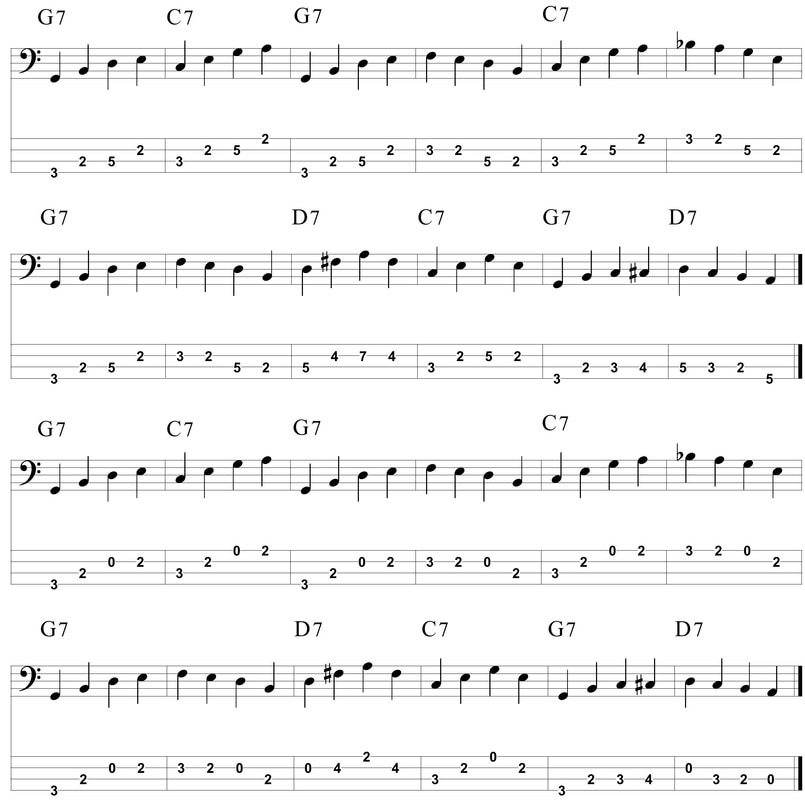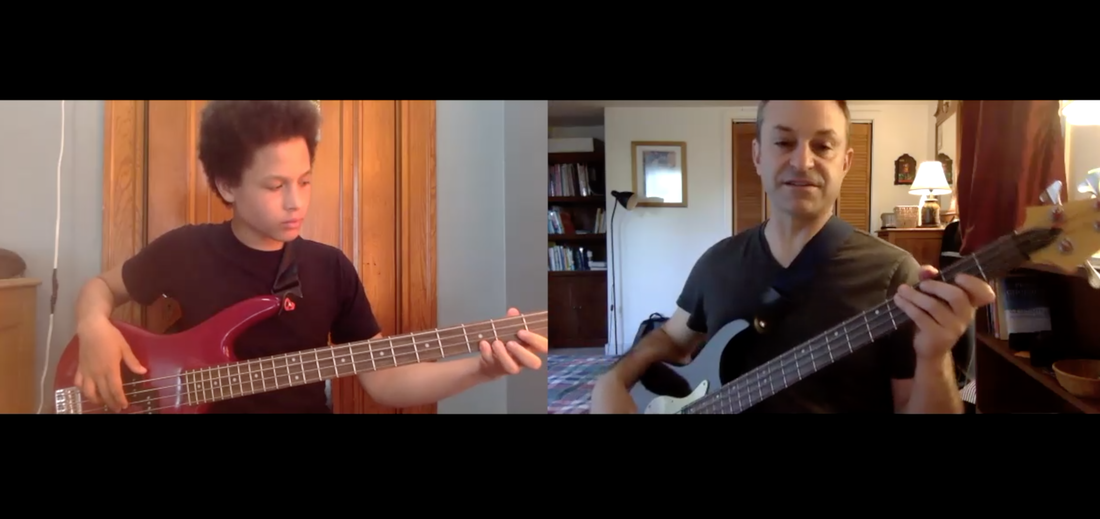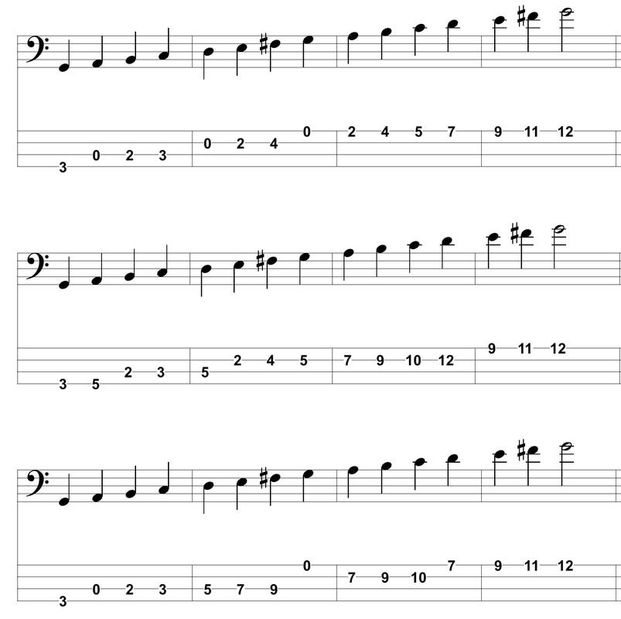|
There are so many benefits to transcribing basslines and solos: ear training, developing musical vocabulary, learning theory, improving improvisation - the list goes on! I spent many years transcribing jazz basslines from the great bassists, such as Paul Chambers, Ray Brown, and Ron Carter, and solos from legends such as Lester Young and Miles Davis. I still transcribe basslines for songs I'm learning, and I always recommend that my students start transcribing as soon as possible. However, learning to transcribe from recordings isn't easy. Often the bass is buried in the mix, notes can overlap with guitar and keyboard parts, and some lines are challenging for beginners and intermediate players to pick up. I have my students start by transcribing straightforward basslines I have recorded to a backing track, with the bass prominent in the mix. Students start by listening to the recording and then using a "fill-in-the-blanks" partial transcription where they just have to figure out and notate the missing measures. I have found that this approach works great and helps give students the confidence to transcribe directly from full recordings. Want to try it out? Here is a recording of a blues-rock bassline in the key of A for you to transcribe:
Here is a partial transcription with blank measures for you to fill in. You can print this out, and then transcribe the blank measures from the recording. The measures that are already notated should help you fill in the blanks:
Or, if you want to do the whole transcription from scratch, here is a blank chart with just the chord changes:
Finally, here is the answer key! Do your best transcribing the line yourself before checking:
I hope that you find this approach to transcription rewarding and fun. If you want to hear more about how I use transcription in lessons, please contact me!
0 Comments
Many prospective music students ask me if online music lessons work. After teaching online for over 10 years, I can confidently respond: YES! When I started teaching online in 2009, I was skeptical that teaching online would be effective, and I told my first student that we should try it out just to see how it would go. We were both pleasantly surprised, and this student has been with me online since the beginning.
The online lesson format is really quite similar to learning in-person, but without the hassle of commuting, parking, and waiting (for parents while their child takes the lesson). Each week we'll review what we did the previous week, and then build on the material. For example, we might work on technique, scales, improvising, or learning a tune. I'll have you play what you've practiced and then we'll go over some ways to improve or learn new skills. I offer a range of helpful materials such as play-along tracks, improvisation apps, and music reading practice. If you have any questions about the material or practicing between lessons, you can text me or email me. In short, online lessons work! Be in touch today about learning more. Before they started working with me, a fair number of my bass students had already studied with teachers who taught them to play “patterns” or “shapes.” If you’re not familiar with this approach, it means that you start on a bottom note (usually a fret on the E or A string) and then learn a string/fret pattern above this note that goes with a scale, arpeggio, or bassline you want to play. Here is an example of a C major and D major scale played using the same shape: Is there anything good about this approach? Sometimes, learning shapes can help you quickly learn a bassline or scale and then move it to another key without much thought. It’s also easy to teach, and therefore may be attractive to certain teachers. However, there are some major disadvantages. In my opinion, using the pattern approach exclusively is not playing music, it’s really just moving your fingers to more or less correct spots so it sounds like you’re playing music. It’s as if a dancer tries to dance by stepping on foot-shaped markings on the floor. Perhaps the worst problem is that you may never learn the note names you are playing, or most crucially, the relationships of notes to chords and chord progressions. Knowing these relationships, intuitively, is the key to being able to improvise convincingly and play basslines and solos with freedom and musicality. How do you break out of patterns and shapes? First of all, use open strings! And yes, open strings are notes, just like fretted notes. I’ve been surprised by the number of students I’ve taught who didn’t know this when they started. By not using open strings, these students were limiting their technique - it is a lot more work to move from an E on the D string to the D on the A string than just playing the E and then the open D string. Using open strings also makes shifting up and down the neck much more manageable. With or without open strings, you may be surprised to discover that there are many ways to play the same musical phrase. Once you get good at playing phrases on different strings, it becomes much easier to navigate the fingerboard and connect parts of basslines together. Practicing these different ways with scales and arpeggios is a great way to start to incorporate open strings and develop more flexibility in your playing. To start, I suggest finding three different ways to play a scale or arpeggio, then mixing them up going up or down. Make sure at least one way uses open strings, as long as there is an E, A , D, or G to be played! For an example, practice the following three ways to play a two-octave G major scale: Next, try to take the same approach with basslines – many lines can be played with or without open strings. Try out these two ways to play a G blues:  Once you get skilled with breaking out of patterns, you’ll find yourself “unblocked” and your bass playing will be much more flexible, creative, and fun. Enjoy!
|
AuthorJason Davis is an experienced teacher, teaching bass and guitar online and in-studio for over 20 years. Archives
July 2023
Categories |
||||||||||||||||||||||||



 RSS Feed
RSS Feed